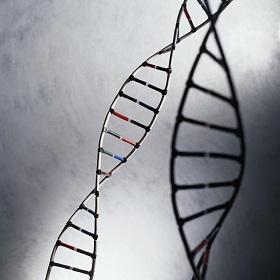Using AI to control energy for indoor agriculture
30 September 2024
Published online 17 April 2014

"This is an excellent illustration of the importance of pharmacogenomics and personalised medicine. We can save lives by knowing the genetic make-up of patients before giving treatments," says Sherif El-Khamisy at the Center of Genomics, Zewail City of Science and Technology, Egypt, who co-led the study reported in Nature Genetics.
When the DNA double helix or parts of it is unwound, a twisting tension builds up, which is relieved by the enzyme Topoisomerase II (TOP2) that induces temporary breaks in both strands of the DNA helix. Sometimes, however, these breaks fail to reseal, resulting in DNA damage. Such lesions can be repaired by a different enzyme, Tyrosyl DNA phosphodiesterase-2 (TDP2).
A team co-led by El-Khamisy identified TDP2 in 2009, predicting the enzyme would also be critical for maintaining genetic integrity in neural tissue. "The prediction was also that cancer patients who undergo topo-based therapy [treatment that kills cancer cells by promoting the errant activity of TOP2] would develop severe toxic side effects if they don't have TDP2, the enzyme that repairs this type of breaks," he explains.
By observing patients undergoing topo-therapy and overreacting, the team identified a mutation resulting in a truncated TDP2 and patients' siblings showing intellectual impairment. They separately scanned the genomes of several generations of a highly consanguineous Irish family in which three brothers showed motor disabilities, epilepsy and mental retardation, to locate candidate mutations. They found a homozygous mutation (occurring in both copies) of the TDP2 gene that causes erroneous processing of the mRNA encoding TDP2, resulting in a truncated protein missing domains essential for its correct function.
To understand precisely how loss of functional TDP2 affects neural functioning, the researchers used a cell model in which the expression of a certain set of genes can be chemically induced. They reduced the expression of TDP2 in these cells, then chemically induced DNA transcription. They noticed a remarkable decrease in transcription of the treated cells compared to the controls. The decrease indicates that mutated TPD2 causes neural dysfunction by disrupting transcription of genes involved in development and maintenance of neural cells.
These findings can instruct clinical practice to optimize cancer therapy, El-Khamisy says. "We should change healthcare practice and stratify patients undergoing Topo-based therapy based on their TDP1 and TDP2 level. This is critical to avoid unnecessary toxic side effects and maximise therapeutic outcome."
Nourtan Abdeltawab, a microbiologist at Cairo University, said the findings are important. "I am hopeful that with evidence like this article, clinicians, clinical pharmacists, patients and most importantly funding agencies will start to comprehend the need for applying pharmacogenomics on a wider range."
doi:10.1038/nmiddleeast.2014.94
Stay connected: